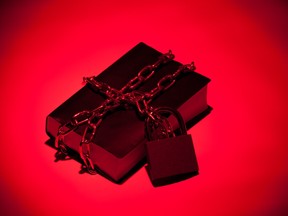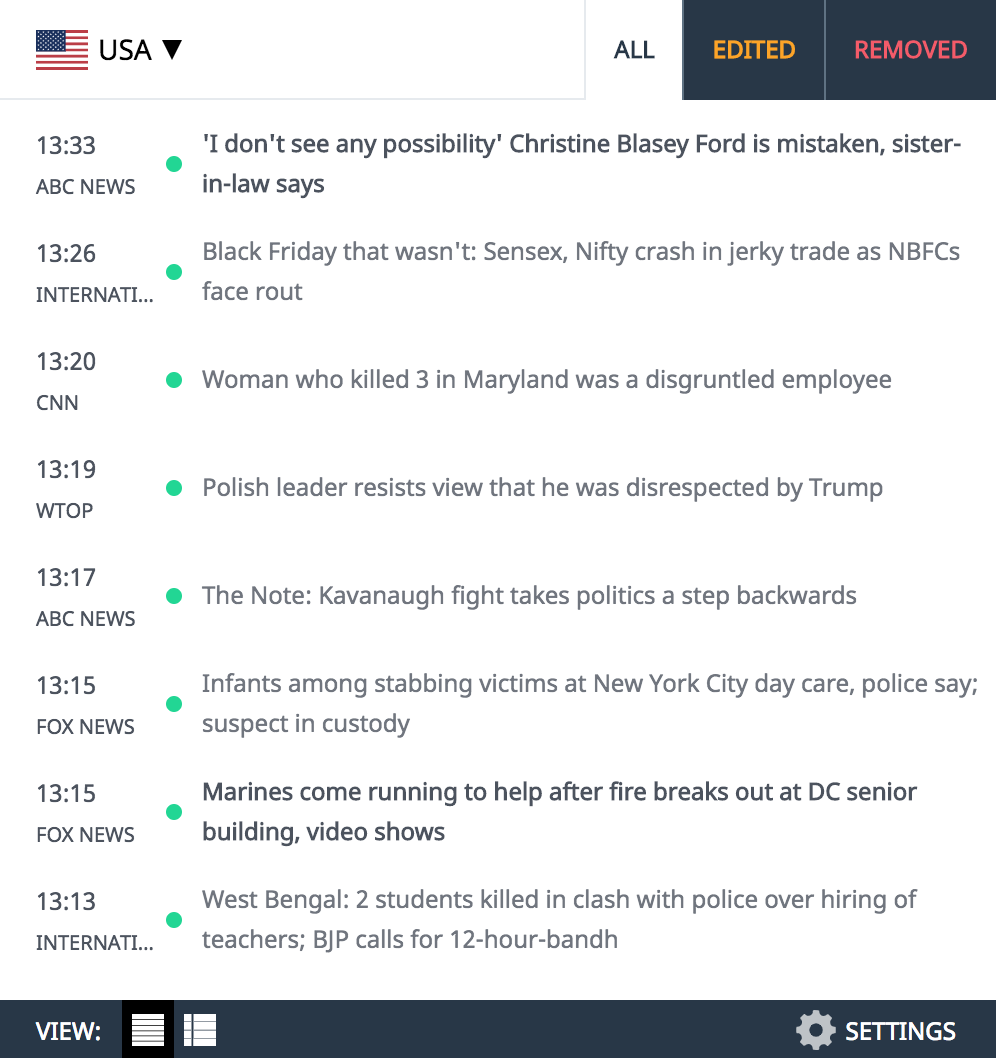'The common concept underpinning the censorship we're seeing is that certain ideas and information are a threat'

Tens of thousands of books are being banned or restricted by U.S. prisons, according to a new report from PEN America. The list includes everything from self-help books to an Elmore Leonard novel.
“The common concept underpinning the censorship we’re seeing is that certain ideas and information are a threat,” says the report’s lead author, Moira Marquis, senior manager in the prison and justice writing department at PEN, the literary and free expression organization.

Article content
Article content
Timed to the start Wednesday of Prison Banned Books Week, “Reading Between the Bars” draws upon public record requests, calls from PEN to prison mailrooms, dozens of accounts from inmates and PEN’s struggles to distribute its guide for prison writing, “The Sentences That Create Us: Crafting A Writer’s Life in Prison,” which came out last year.
Marquis said that the most common official reasons for bans are security and sexual content, terms that can apply to a very wide range of titles. Michigan’s “restricted” list includes Leonard’s thriller “Cuba Libre,” set right before the 1898 Spanish-American War, and Frederick Forsyth’s “The Day of the Jackal,” about a professional assassin’s attempt to murder French President Charles de Gaulle in the 1960s. Both novels were cited as a “threat to the order/security of institution.”
Related Stories
-

Illinois to become first U.S. state to ban book bans
-

Two Canadians among authors of most-banned books in America
“One of the books (‘Day of the Jackal’) deals with the planned assassination of a political leader/methods for engaging in such activities and the second (‘Cuba Libre’) deals with an individual engaged in various criminal enterprises,” a spokesman for the Michigan Department of Corrections told The Associated Press in an email. “As part of the updated restricted publication process, a new Literary Review Committee has been formed to review items that were previously placed on the restricted publication list, to determine if they should remain or be removed.”
Article content
Amy Schumer’s memoir “The Girl with the Lower Back Tattoo” was flagged by Florida officials for graphic sexual content and for being “a threat to the security, order, or rehabilitative objectives of the correctional system or the safety of any person.”
Other books to appear on banned lists: Sun Tzu’s “The Art of War,” the compilation “Prison Ramen: Recipes and Stories from Behind Bars,” Barrington Barber’s “Anyone Can Draw: Create Sensational Artwork in Easy Steps” and Robert Greene’s self-help bestseller “48 Laws of Power.”
“It’s a form of control. It’s the ultimate form of power of manipulation,” Greene said in a statement issued through PEN.
In its report, PEN found parallels between the frequency of prison bans and book bannings in schools and libraries. In Florida, PEN has estimated that more than 40% of all library bans took place in Florida in 2022. Meanwhile, the organization found that more than 22,000 books are banned from Florida prisons — the highest of any state — as of early this year, with some entries dating back to the 1990s. Texas, another frequent site of library bannings, had more than 10,000 prison book bans, second only to Florida.
Article content
Incidents of banning are likely much higher than what PEN has compiled, according to “Reading Between the Bars,” because record keeping by many prisons is erratic or non-existent. Kentucky and New Mexico are among more than 20 states that do not keep centralized records.
“Prison book programs have mostly tried to raise awareness locally when prisons implement new censorship restrictions for communities they serve,” the report reads. “But these programs are largely run by volunteers and struggle to keep up with the demand for books even absent censorship. The upshot is that there have been few nationwide efforts to analyze trends in carceral censorship.”
Marquis says that PEN places bans into two categories: content-specific, in which books are banned because of what they say or allegedly say, and content-neutral, in which books are restricted because they are not sent through accepted channels. In Maine, Michigan and other states, prisoners may only receive books through a select number of vendors, whether Amazon.com, a local bookstore or an approved publisher. In Idaho, Amazon and Barnes & Noble are not among the nine approved sellers, which include Books a Million and the Women’s Prison Book Project.
Article content
Content-neutral restrictions may also apply to the packaging (some federal facilities only permit white wrapping, Marquis says), and against free or used literature “because the intended recipient did not receive permission from a warden — or similar administrator — for each specific title mailed to them before the literature arrived,” according to Marquis.
A spokesman for the Idaho Department of Correction told the AP in an email that restrictions on packaging had become necessary because of “an increase in the amount of drug-soaked mail being sent to our residents.” He added that inmates can receive books and periodicals free of charge from authorized vendors and publishers.
“We believe our guidelines are a reasonable response to a growing problem that puts the health and safety of the people who live and work in Idaho’s correctional facilities at risk,” he said.
“Reading Between the Bars” follows a report released late in 2022 by the non-profit newsroom the Marshall Project, which found some 50,000 banned prison titles, based on lists made available by 19 states. In 2019, a PEN report explored different levels of prison bans — from individuals not permitted to receive a given book to statewide restrictions — and determined that restrictions were both widespread and arbitrary.
Article content
“With over two million Americans incarcerated, the book-restriction regulations within the United States carceral system represent the largest book ban policy in the United States,” the 2019 study reads in part. “The reality of book banning in American prisons is systematic and comprehensive. State and federal prison authorities censor content with little oversight or public scrutiny. Often the ultimate decision-maker about a person’s right to read is housed in the prison mailroom.”
Our website is the place for the latest breaking news, exclusive scoops, longreads and provocative commentary. Please bookmark nationalpost.com and sign up for our newsletters here.
Article content


